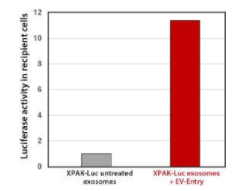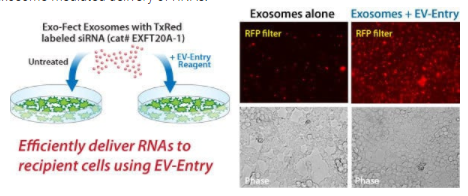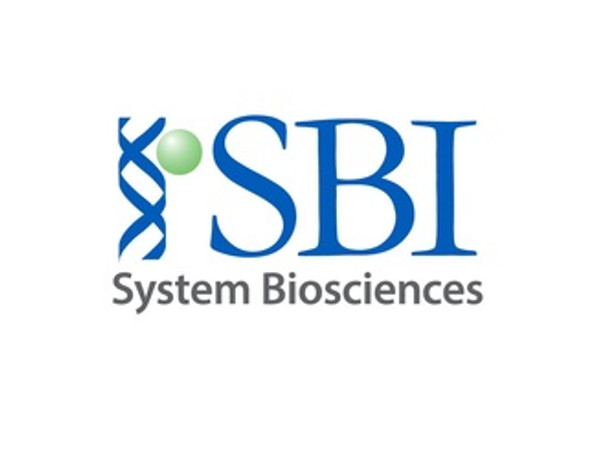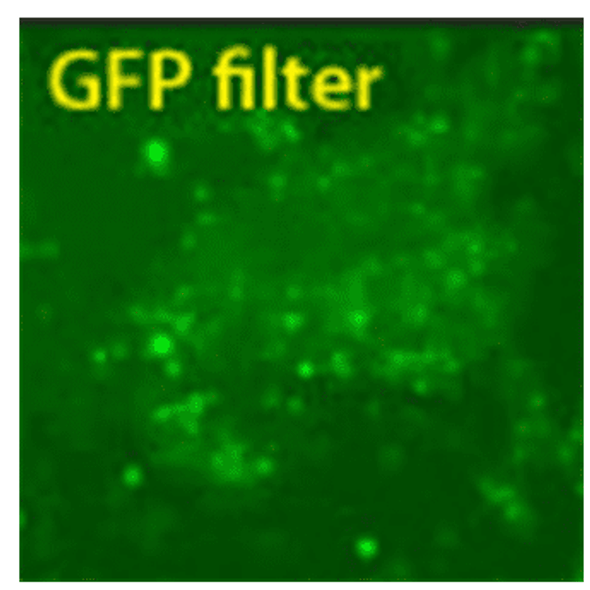System Biosciences
EV-Entry System for Exosome Delivery (10 rxn)
- SKU:
- EVEN110A-1
- Availability:
- Usually Shipped in 5 Working Days
- Size:
- 10 reactions
- Shipping Temperature:
- Blue Ice/ Dry Ice
Description
EV-Entry System for Exosome Delivery (10 rxn) . Cat# EVEN110A. Supplier: SBI System Biosciences
Products

Overview
- Fast—the protocol takes less than one hour to complete
- Easy—just add the two reagents to your exosomes, incubate at room temperature, and add to recipient cells
- Powerful—greatly enhances the ability of exosomes and other EVs to deliver protein and RNA cargo to recipient cells
Supporting Data
See how well the EV-Entry System enhances exosome-mediated cargo delivery
The EV-Entry System increases the efficiency of exosome-mediated delivery of proteins to target cells.
In Figure 1, Exo-Green is used to label exosomal proteins, and then EV-Entry enhanced transfer of Exo-Green-labeled exosomal proteins to recipient cells is monitored using fluorescence microscopy. In Figure 2, enhanced transfer of a specific exosomal protein—XPack-Luciferase (Cat.# XPAK732PA-1)—is shown. In both cases, the EV-Entry System increases the amount of cargo delivered.

Figure 1. The EV-Entry System enhances delivery of Exo-Green-labeled exosomal proteins to recipient cells. Exosomes were labeled with Exo-Green and added to HEK293 cells with or without the EV-Entry reagent, and cells imaged after 18 hours. Cells that received exosomes with the EV-Entry reagent showed remarkably enhanced uptake of exosomes and release of exosomal cargo into the cytoplasm as demonstrated by the staining pattern of exosomal proteins in the recipient cells using a very brief exposure time.

Figure 2. The EV-Entry System enhances delivery of XPack-Luciferase to recipient cells. HEK 293 cells were transfected with XPack-Luciferase, exosomes were harvested, and then these XPack-Luciferase-containing exosomes were added to naive HEK 293 cells with or without the EV-Entry reagent. After 18 hours, target cells were washed multiple times with PBS, lysed and luciferase activity measured. Cells that received XPack-Luciferase exosomes treated with the EV-Entry reagent demonstrated over 11-fold greater luciferase activity compared to untreated exosomes, demonstrating that EV-Entry enhances cargo delivery.
The EV-Entry System also increases the efficiency of RNA cargo delivery.
In Figure 3, XMIR Texas Red-labeled Positive Control RNA Oligos (Cat.# XMIR-POS) are used to label exosomes and then EV-Entry enhanced transfer of the XMIR Texas Red-labeled RNA Oligo to recipient cells is monitored using fluorescence microscopy. As with the delivery of protein cargo, the EV-Entry System improves the efficiency of exosome-mediated delivery of RNAs.

Figure 3. The EV-Entry System enhances delivery of a Texas Red-labeled exosomal RNA to recipient cells. HEK293 EV Shuttles (Cat.# EVS105A-1, 100 µg) were Exo-Fected with Texas Red-labeled control siRNA (50 pmol) and incubated naïve HEK293 cell with or without the EV-Entry reagent. Recipient cells were imaged 18 hours post incubation. The EV-Entry reagent greatly increased the exosome-mediated siRNA delivery to recipient cells.















